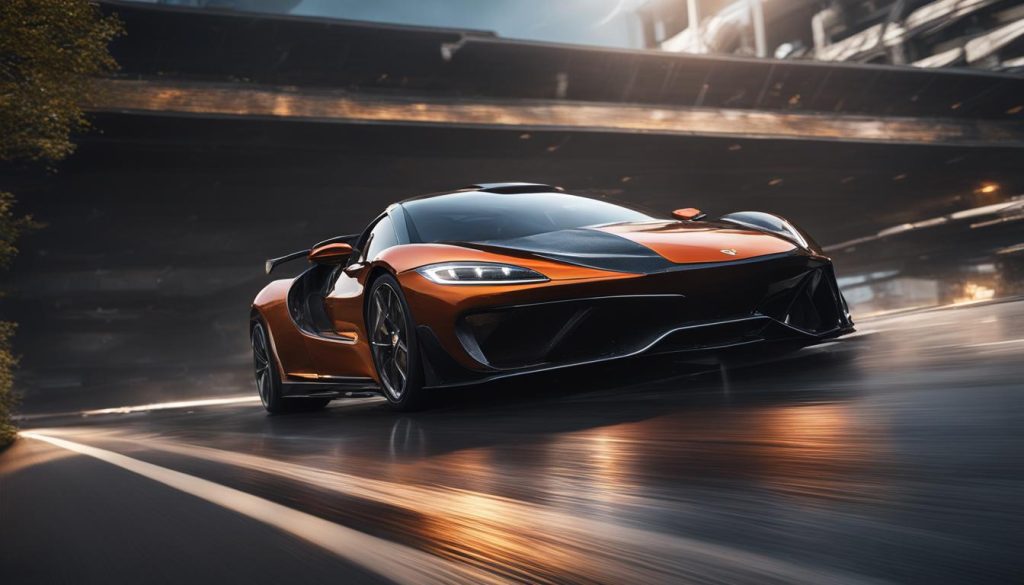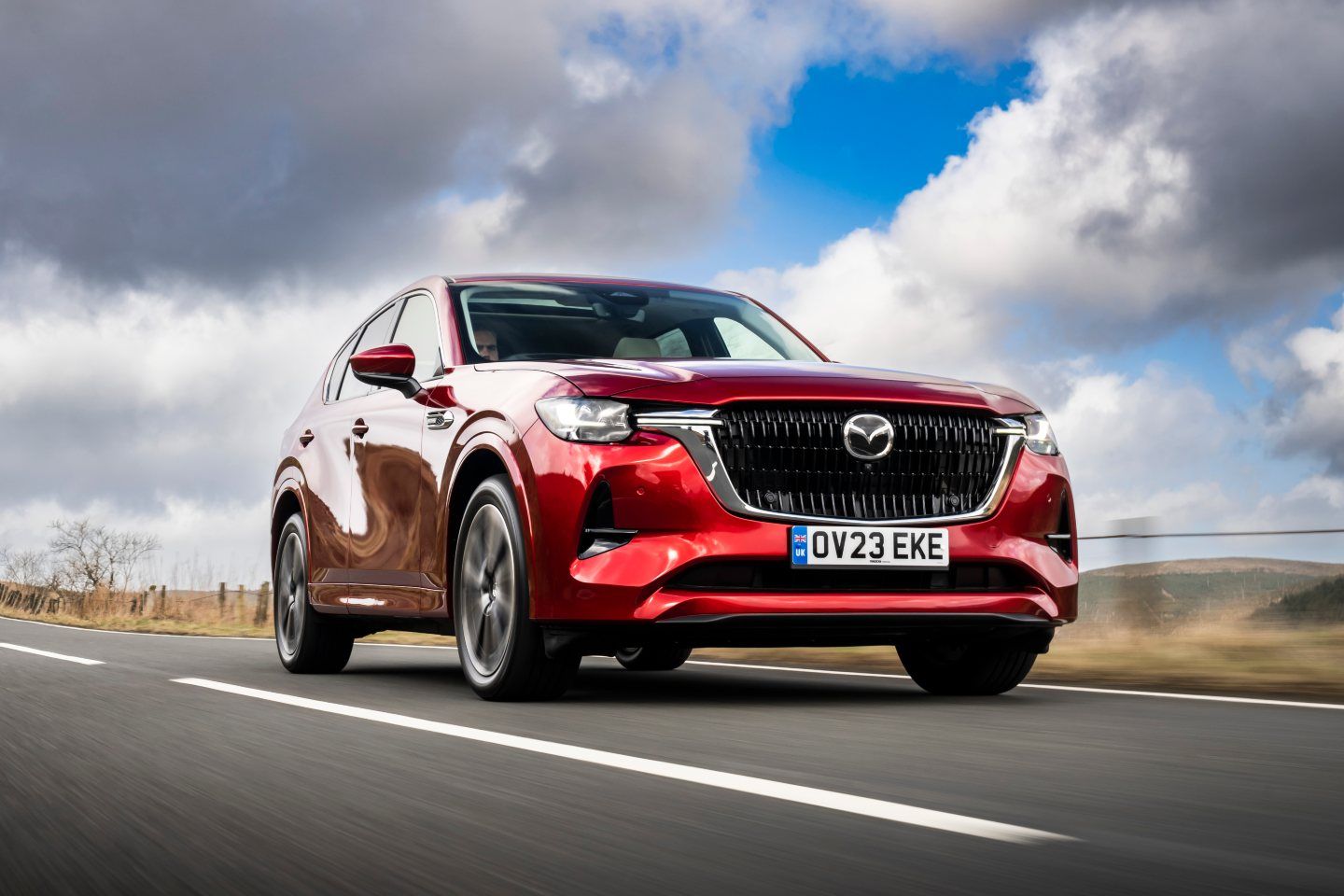
Last month I drove the recently introduced Mazda CX-60 PHEV, and I felt like a schoolteacher admonishing a child who’d just flunked an exam. And not the ne’er-do-well kid – the one blowing gum bubbles and passing rude notes around at the back of the class. One of the nice kids. The sweet one. The keen student whose work is generally up to snuff. That’s how I’d describe Mazda: a good car company that knows how to build a decent car. But it flunked the CX-60 plug-in, no doubt about that, so I signed off in red ink with a ‘Could do better’ and ‘Must try harder.’ Well, words to that effect, not actually in red.
Anyway, Mazda has gone away and tried again. It has since introduced diesel versions of the CX-60 to the UK, and, fair play, the press office couldn’t wait to get PH back behind the wheel. (See, I told you Mazda is a ‘good kid’: keen to please and no sulking whatsoever.) The choices offered were the 200hp rear-wheel-drive model or the 254hp all-wheel-drive version. I chose the latter. Partly because PHers tend to love something with a bit of oomph and partly because, well, who wants a rear-wheel-drive SUV? Seems a bit like fitting a racing catamaran hull with the towering superstructure of a cruise ship.
As some of you may know, this is a new diesel engine and that alone marks it down as special these days. Even more so because it’s a big one: a 3.3-litre straight six. Hasn’t Mazda had the memo stating quite clearly the world is done with such beastly dinosaurs? Actually, of course, the world isn’t done with internal combustion just yet. The old world might’ve pressed the all-electric ‘nuclear’ button, so to speak, but Mazda’s home market still loves internal combustion and so does the US. That’s two massive markets right there, so if you thought that Mazda is led by dunderheads who do bad business, it might just have the last laugh.
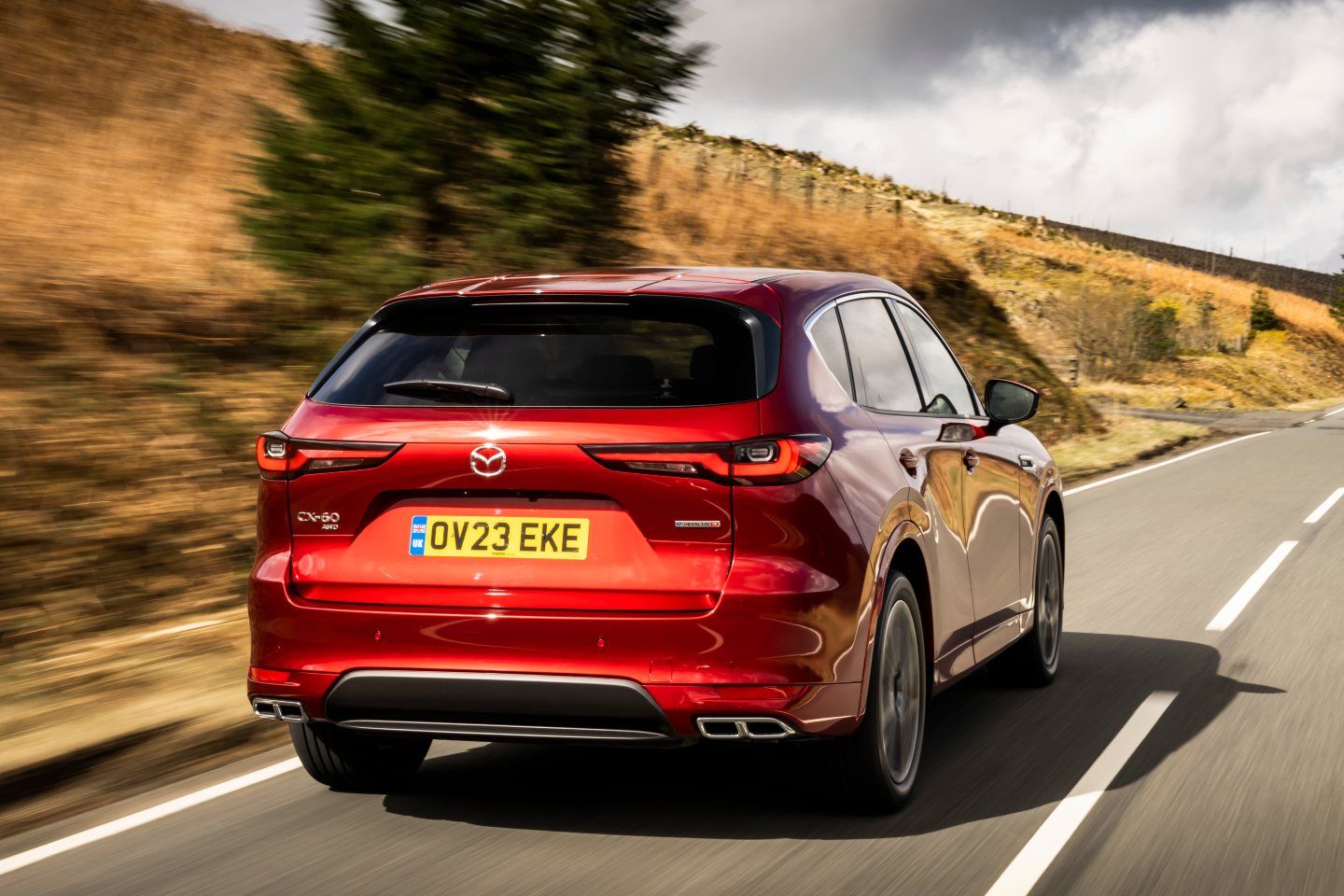
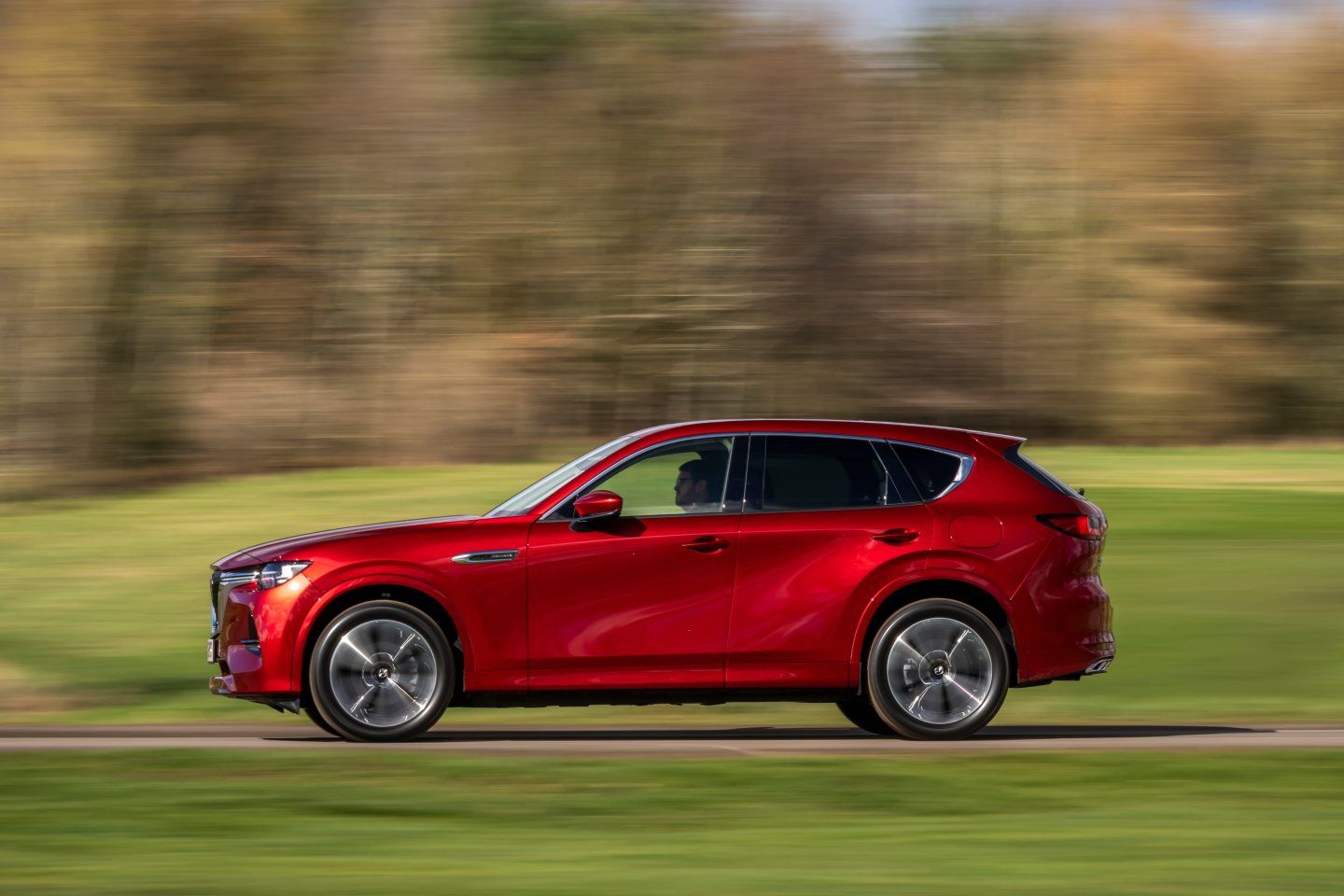
And here’s why I think they’re right and everyone else is wrong. It’s a travesty that we let an emissions scandal ruin a sensible fuel type. It was primarily Volkswagen that messed up, and it’s since held its hands up and paid its dues. But there was nothing wrong with diesel per se. If one banker cooked the books, you wouldn’t suddenly get rid of money, would you? But after the vast technological investment that took this once smelly, dirty, greasy liquid and made it burn very efficiently indeed – in some cases cleaner than petrol, with fewer nitrous oxide emissions and always much lower CO2 – the resulting bad press helped to capsize the entire programme. Sure, it would have ultimately suffered the same fate as petrol-based combustion as electrification claimed all the R&D money, but modern diesel engines ought to have been a bigger part of the interim solution while we wait for the infrastructure to catch up with widespread EV ownership.
Accordingly, I appreciate Mazda’s nonconformity and I hope it does see a return on its investment. It has invested some money, too. This is not just any old big diesel. It has some obvious things, such as 48V mild hybrid assistance to allow the engine to switch off and coast to improve efficiency, but Mazda has also applied what it calls ‘a new, highly innovative, advanced combustion technology.’ This is known as Distribution Controlled Partially Premixed Compression Ignition, and thankfully we can shorten that to DCPCI. Mazda says that, for a car the size of the CX-60, a larger-capacity diesel is better than a smaller one. It’s less stressed and more able to run at its optimum efficiency, and with DCPCI it can achieve even fewer emissions and even better fuel economy. Mazda quotes its new engine as having a thermal efficiency of over 40 per cent for a ‘considerable part of the practical operating range.’ That’s not bad, is it?
Well, to qualify this I did some thinking. You can’t buy many equivalent six-cylinder diesels in a car the size of the CX-60 today because the world’s gone mad, so I looked back to a time when it wasn’t – around 2018. Back then you could buy a BMW X3 30d – a similar-sized car, similar power and same number of cylinders. The 30d achieved WLTP figures of 44.8mpg and 164g/km of CO2. Now, the X3 30d was quite a bit lighter than this CX-60, so that’s in its favour, but even so, this new 3.3 e-SKYACTIV D MHEV 254PS hits 54.3mpg and 137g/km. Well done DCPCI. The CX-60 PHEV, by the way, which is heavier than the diesel, officially does 35.8mpg when the battery runs out. When I drove it in that state, it was doing between 27 and 35mpg, while this 3.3 diesel refused to go below 40mpg in town and was easily in the upper 40s on a fast run. Tickle it, and it would no doubt do quite a bit more.
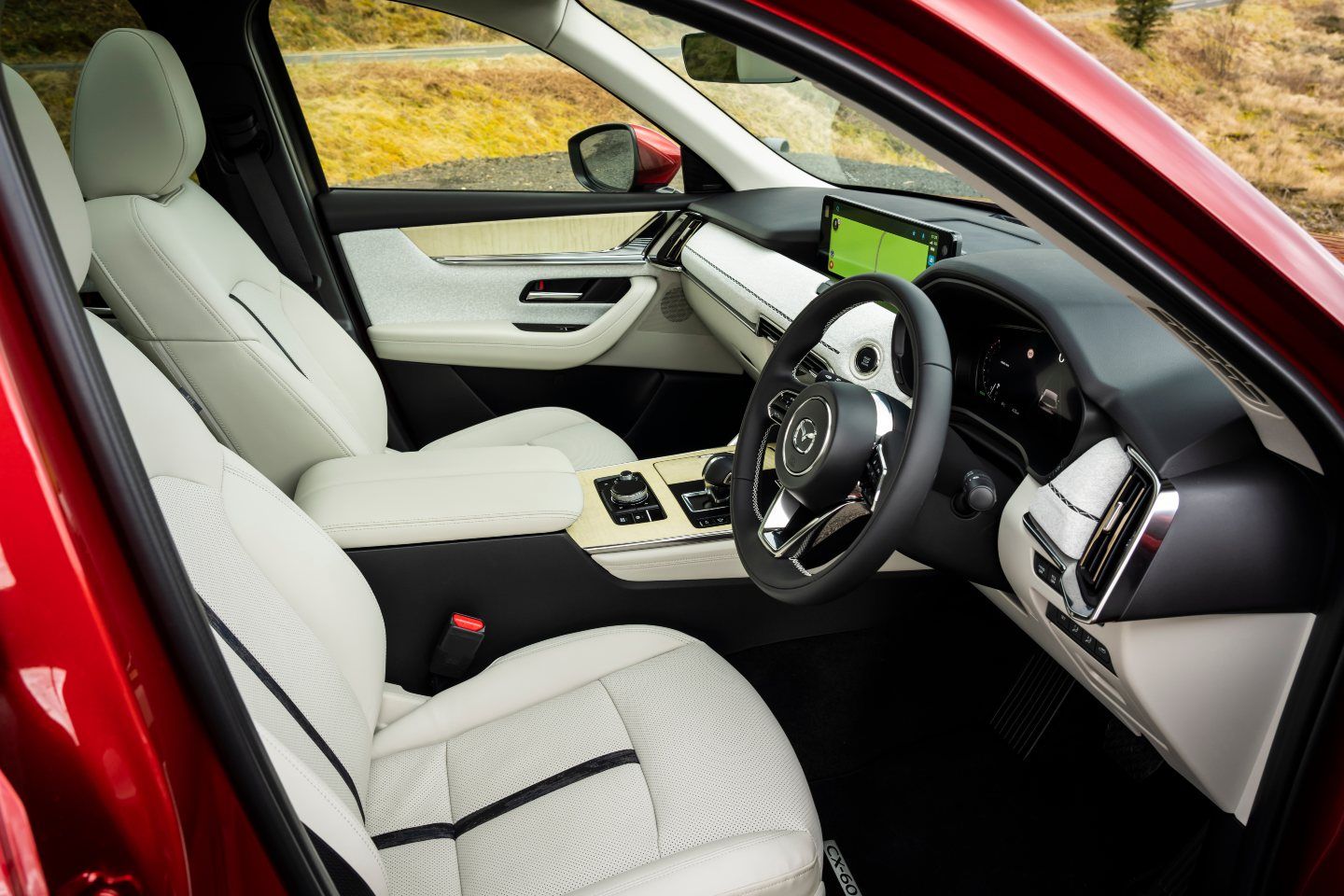
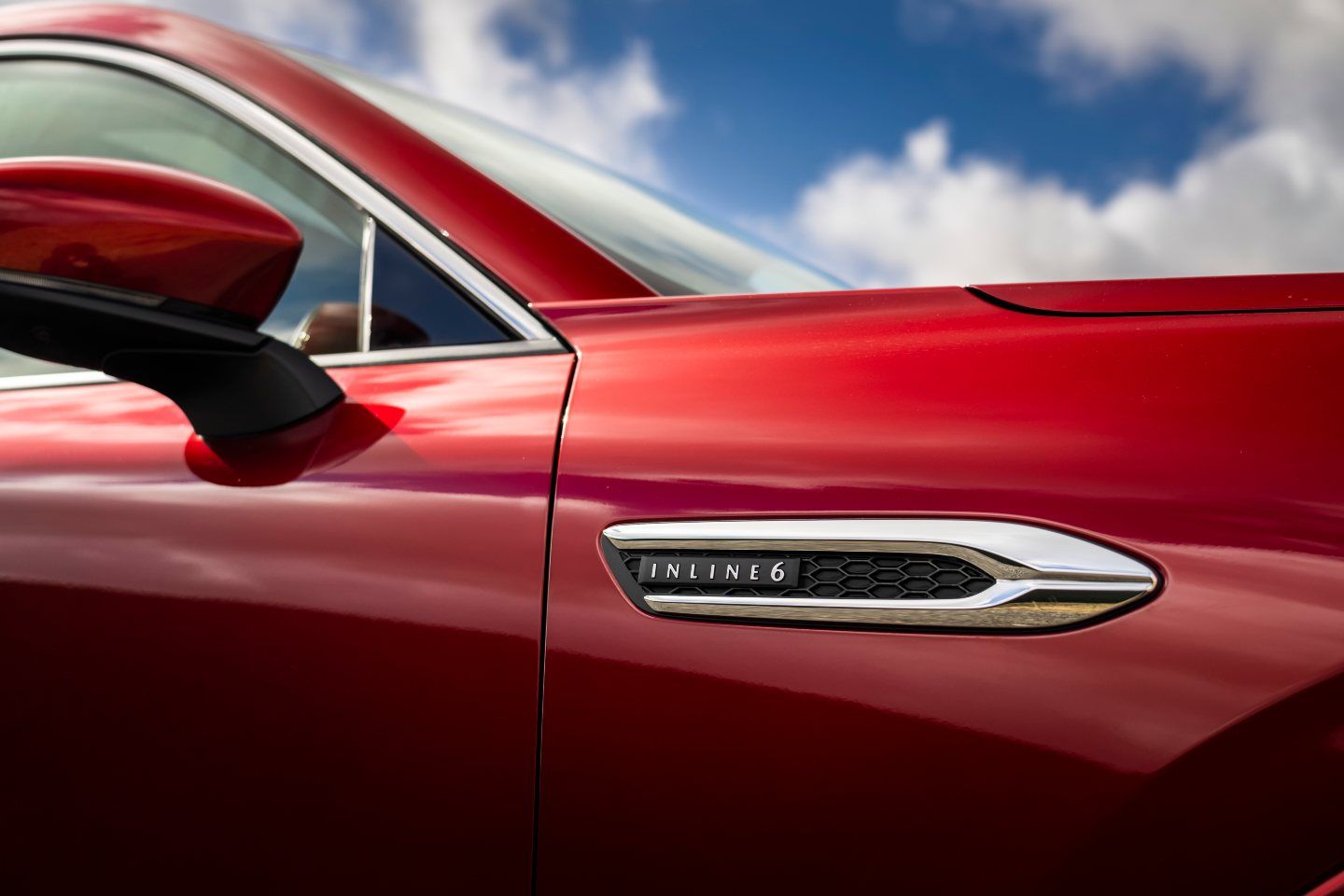
I’d say that’s a win, then, and it drives better than the PHEV, too. For a start, it sounds more characterful than the four-pot petrol in the plug-in version, with a throaty, six-cylinder diesel rumble. Apparently, the lean-burn DCPCI isn’t as quiet as other compression ignition processes, and it’s definitely more raucous than JLR’s latest Ingenium 6s. It took me back to the late ‘90s and early ‘00s, actually, and the kind of hard-edged but pleasingly purposeful tones of six-cylinder BMW diesels from that era. I liked it for that, especially because it’s mostly noise – you don’t feel any more engine vibrations entering the cabin than you would from most other diesels. I also liked the gentle giant wall of torque it produced – oh how I’ve missed that. The effortlessness from just above idle is great when you’re tootling around town and the mid-range gusto is immense. It’ll whisk you up to motorway speeds with carefree abandon.
I also think this version steers better than the PHEV. I didn’t like the vagueness of the hybrid’s steering on motorways, but the diesel’s more positive connection solves that and it weights up pleasingly as you progress the lock around corners. I still didn’t find this CX-60 a sporty drive – the kind of car you can’t wait to hurl into the next available roundabout – but it sticks well enough when you do lob it about and doesn’t lean over alarmingly, either. Which makes sense when you think about it. The PHEV I drove was a high-end trim with bigger wheels and more equipment. It has a 17.8kWh battery and motor lurking underneath as well, while this car, with its diesel and entry-level spec, is not far off 200kg lighter.
That helps the ride, too. I mean both the lower weight and the lower trim grade, because this car’s 18-inch wheels and plumper tyres have more give than the skinny-profile 20s fitted to the hybrid (the pics are press pics of a different, high-end car by the way). However, it’s still far from supple. Don’t buy a CX-60 if you long for a cosseting ride; you’ll feel you’ve been swindled. It still gets very punchy over the winter-damaged roads that most councils seem to think are perfectly acceptable to leave as they are, but it’s not as crude nor as crashy as the PHEV. Although here’s the thing, I still think Mazda needs to go away and do a bit more cramming, because ‘could do better’ is the phrase that repeatedly sprang to mind when this car sprung.
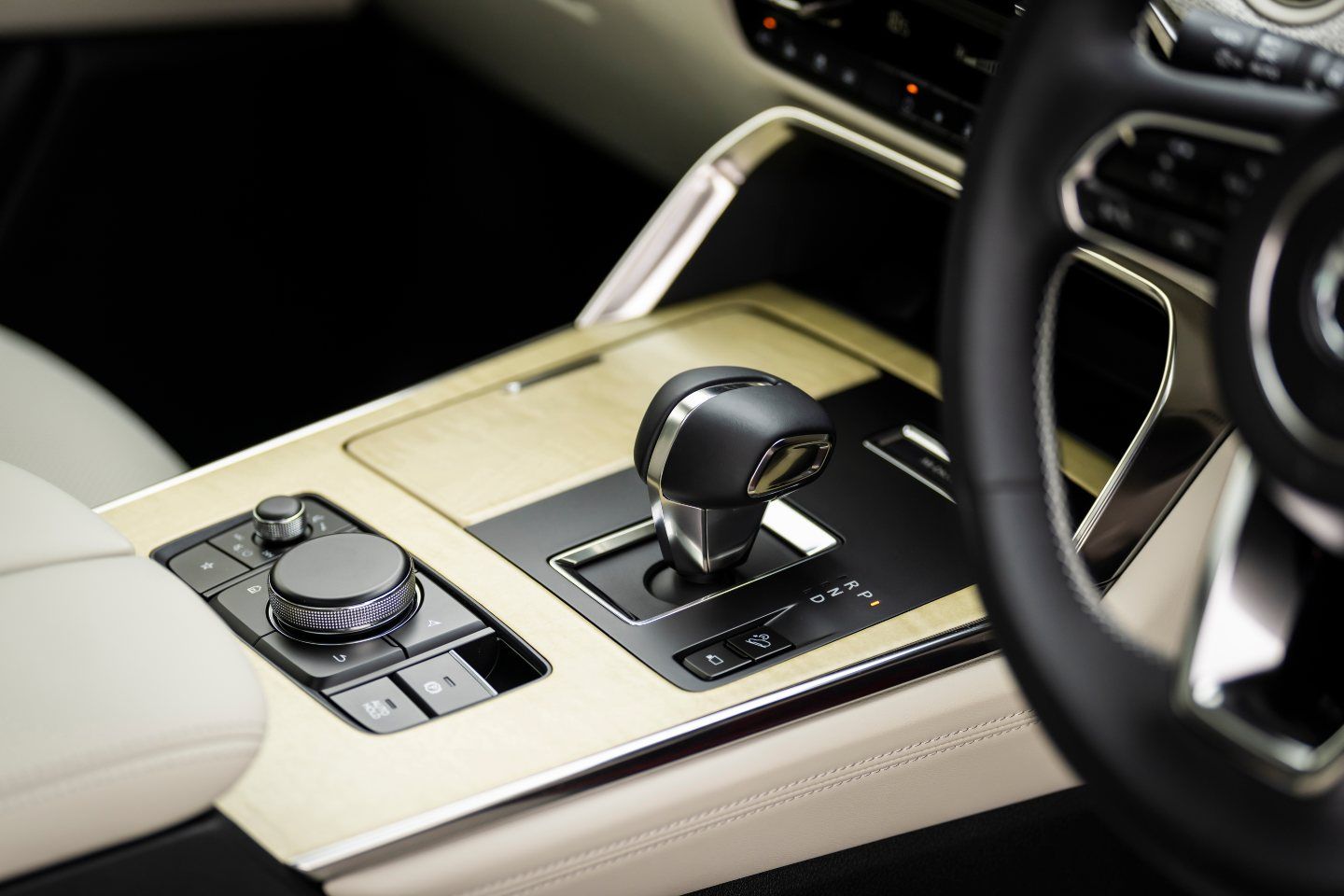
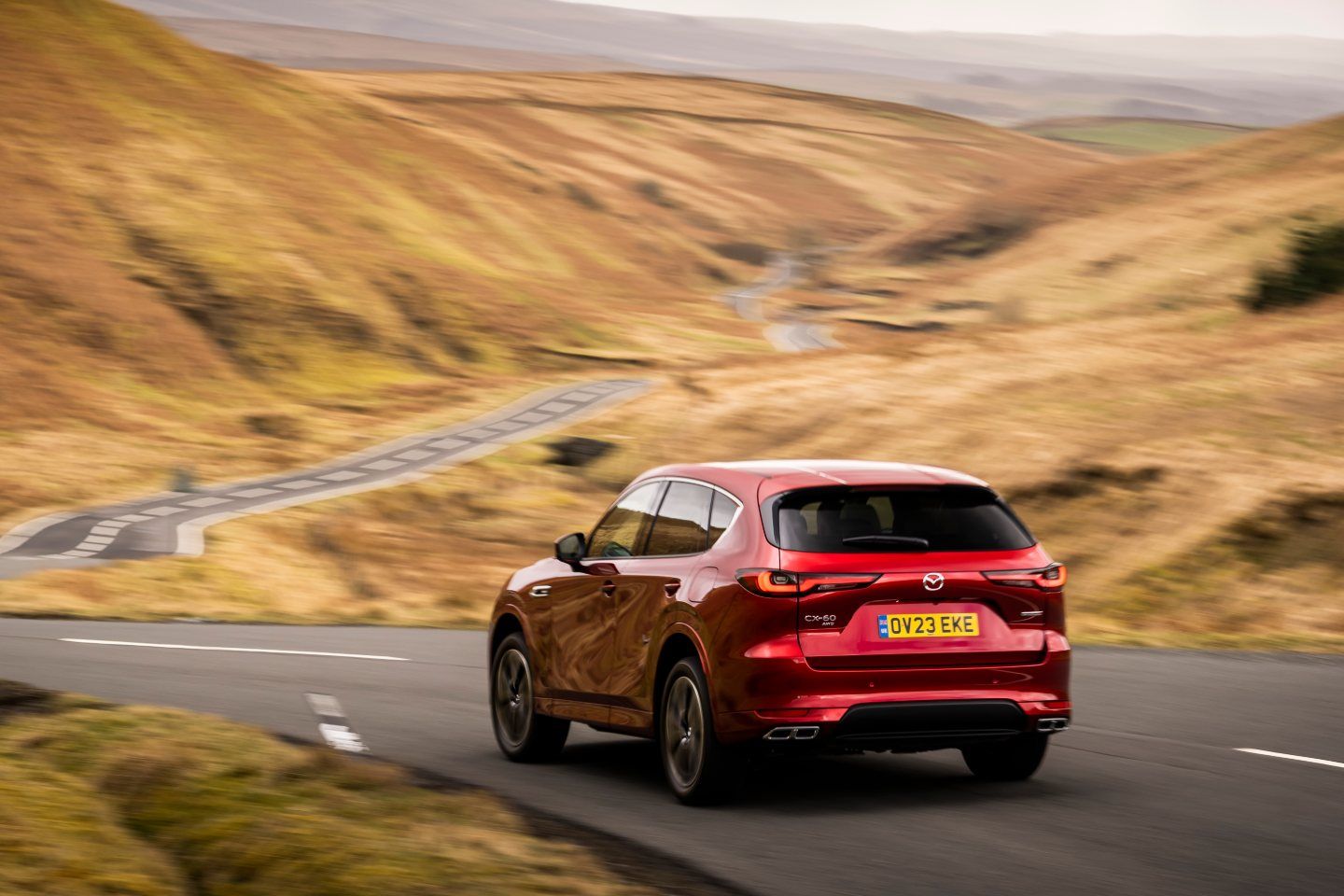
There’s the damping, for one thing. Who signed off on a car that’s releasing off bumps at the back end – at low speeds and right up to 70mph on the M25 – like a jack in the box? I don’t get it at all. Why make a car deliberately stiff but also under-damped? Because that’s the worst of both worlds – and it’s not just the ride comfort it screws up. I turned into a right-hander at about 30mph, hit a series of sharp bumps halfway round, and the car’s nose literally skipped half a foot to the left. Which is hardly ideal.
Like the PHEV, the isolation of wind and road noise is fine, so I have no complaints there, and, as I said, I don’t have an issue with the engine’s vibrations, either. But I do take issue with the bizarre whirring noise on start-up. This lasts for about five seconds and is followed by a clunk so severe that it rocks the car, after which the CX-60 finally settles into a regular, subdued idle. I am still flummoxed by that. What on earth is engaging or disengaging underneath to cause that? It’s like an undercarriage being pulled up but a) this is not a plane, it’s a car and b) I hadn’t even put the thing in gear at that point.
And that’s because it wouldn’t let me. It takes several seconds of hammering in frustration at the gear lever release button before you’re finally able to select a gear. This is a small thing, I know, and if everything else was perfect I’d probably brush it aside, but like a lot of the CX-60’s niggles it just built up in my mind. The driveline, by the way, is better than the PHEVs. On the move, the PHEV was almost always guilty of clunking or lurching or doing something odd, but the eight-speed ‘box in this diesel only shunted some of the time – mostly at low speeds. Technically, that is an improvement. But there’s still no manual override. Mazda positions itself as sporty, so you’d think that would be a given – not least because it’s gone to the time and effort to install paddles behind the steering wheel. Yet after you’ve used them it reverts back to auto mode a few seconds later. As far as I could tell, there is no way to stop that.
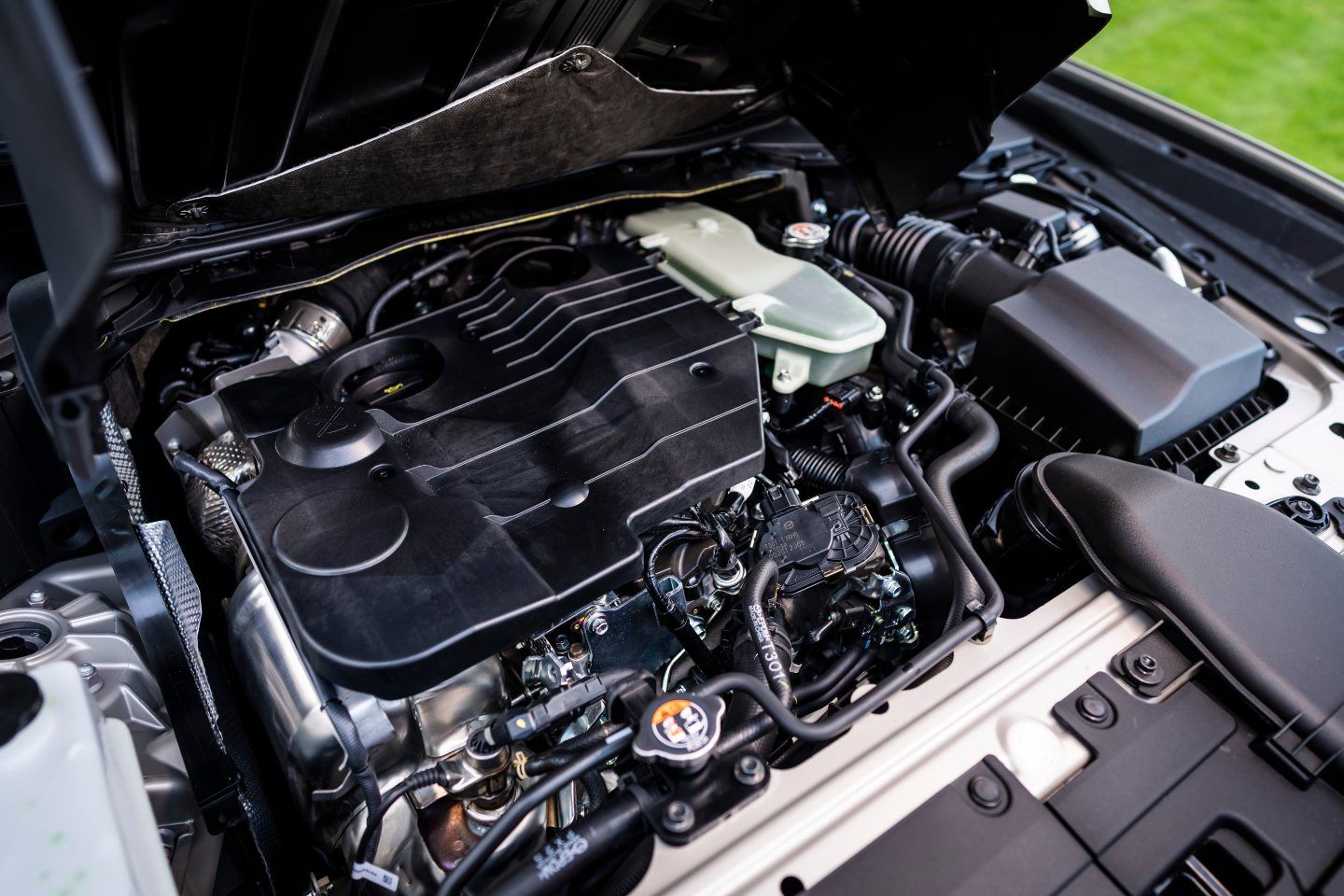

Having not taken to the PHEV, I was really hoping that this diesel would be the CX-60’s salvation. With less weight and taller tyres it should’ve proved to be the CX-60 to buy. And actually, it is. I’d have the diesel over the PHEV any day because I love the engine – I love the concept, roo. It works if you need a biggish car, do lots of miles and don’t have anywhere to charge by offering strong performance and sensible fuel economy. That bit is brilliant. And there are other things about the CX-60 to like too, like its well-put-together interior, which feels genuinely premium. Other than the slightly naff imitation metal trims fitted to Exclusive-Line trim (again, these pics aren’t of the car we had), it’s a great place to be. I include in that the decent driving position, too, with comfortable seats, clear instrumentation and a well-executed infotainment system. Despite its flaws, there’s much to appreciate here.
It gets an A for economics, too. Earlier on I compared this diesel with an X3 you can’t buy, but what about a rival that is available? Even the most basic Audi Q5 costs £45,000, and for that you get a four-cylinder diesel with 204hp and parsimonious equipment. For the same money, even this bog standard CX-60 trim offers plenty of toys, two extra cylinders, another 50hp and still officially does 10mpg more while producing 27 fewer grammes per kilometre of the unwanted stuff. Even if you couldn’t give two hoots about the climate crisis, that’s a meaningful drop from 37 to 32 per cent on your BIK bill.
With a little more development in other areas, I’m sure the CX-60’s problems are solvable. So Mazda, I am giving you some physics homework. This centres on bodies in motion and fluid dynamics, which, if you understand them fully, will help you correct the ride issues. I don’t know what will solve the oddities of the gearbox – maybe that’s a job for the potions master at Hogwarts – but once that’s sorted along with everything else, you’ll be upping your overall grade considerably. As it stands, though, I am afraid the CX-60 diesel takes home a could-do-better C-. Shame.
Specification | Mazda CX-60 3.3 D 254PS AWD Exclusive-Line
Engine: 3,283cc, straight six, diesel
Transmission: Eight-speed automatic, all-wheel drive
Power (hp): 254hp @ 3,750rpm
Torque (lb ft): 406lb ft @ 1,500-2,400rpm
0-60mph: 7.4 seconds
Top speed: 136mph
Weight: 1,967kg (inc. driver)
MPG: 54.3 (WLTP)
CO2: 137g/km (WLTP)
Price: £45,630 (price as tested £46,280)
#Mazda #CX60 #Review



